The politics of Low Traffic Neighbourhoods (spring 2024 edition)

A long-heralded report on Low Traffic Neighbourhoods was published by the Department for Transport yesterday (17 March). Trailed by warring briefings in the Guardian and the Times, it was long on rhetoric but short on substance.
Of the parts that look at Oxford specifically, the report rehashes air quality and traffic statistics published by Oxford City and Oxfordshire County councils with which Clarion readers will already be familiar. It concludes “LTNs are effective in achieving outcomes of reducing traffic volumes within internal roads. However, results for boundary roads are mixed.” (All this fuss for that less-than-dynamite conclusion?)
Then, tonight, Oxford City Council’s full council meeting will hear a motion from the council’s smallest party, the ‘Independent Group’, which calls for Oxford’s “divisive non-evidence-based” LTNs to be “removed” and the upcoming traffic filters to be “cancelled”.
Why this sudden burst of interest in a handful of bollards? The answer has not a lot to do with evidence, and a whole lot to do with elections.
Clarion warning: We think the article needs to be written not for clicks or outrage – heaven knows, this debate is emotionally charged enough as it is – but as an explainer on the key points in the debate on active travel. If we were aiming for clicks, we would write something very different. Maybe make yourself a cuppa, or a whole pot, grab a pack of biscuits, and get comfy.
Fitter, happier, more electable
The motion that Oxford City Councillors will hear tonight is proposed by Cllr Ajaz Rehman and seconded by Cllr Shaista Aziz, two Independent Group councillors who broke away from Labour over Gaza.
This is the last council meeting before the May 2nd elections – a last chance to get a headline in the Oxford Mail. Cllr Rehman’s Lye Valley seat continues until 2026 (Oxford City seats alternate on a two-year cycle), but Cllr Aziz’s Rose Hill & Iffley seat will be up for election this time. Lye Valley does not contain any modern LTNs, though the Lye Valley estate effectively has a low-traffic design. Rose Hill & Iffley contains two “historic” LTNs (the long-standing barriers between Ellesmere Road and Tree Lane, and Lenthall Road and Eastchurch) but nothing introduced recently.
But perhaps the exact geography doesn’t matter. The motion before council neatly encapsulates the case against Low Traffic Neighbourhoods in general – be they in Oxford, Jesmond, Bath, Exeter, Streatham, or anywhere else. In this, East Oxford is a proxy for any council trying to reduce traffic in a tough financial climate with no budget for major infrastructure. And the motion, in turn, sets out the same claims made against every LTN.
Let’s look at these claims, quoting the words used in the motion.
“Congestion has increased”
LTNs have been introduced as part of schemes to reduce congestion and encourage active travel. They have failed to meet their stated objectives. Congestion has increased…
Congestion has increased – everywhere. Department for Transport data, released this month, shows that the average speed on local A roads across England fell in 2023, while delays increased.
Oxford has less capacity than most to absorb increases in traffic. It is a medieval city, built for horse and cart. It has grown somewhat since medieval times. Traffic is funneled across a very few bridges over the Thames and Cherwell. Indeed, the city has been reporting traffic issues consistently since 1771, as this Twitter thread demonstrates.
People, in this day and age, mean cars. Reducing congestion, therefore, means reducing cars.
The guiding concept behind Low Traffic Neighbourhoods is that by restricting cars on those streets which were not designed to take substantial through traffic, other forms of transport – walking, wheeling, scooting, cycling – become much safer and more attractive. That, in turn, replaces car journeys with journeys by foot or bike.
Does this happen in reality? When looking specifically at the school run, a major cause of congestion, yes, it does. At Larkrise Primary, a school with 20% pupil premium and 40% on the SEN register, previously 35% of children were driven to school; now just 14% of pupils are. That's 350 journeys each day that were previously done by car, freeing up space on the roads. A similar experience has been reported at nearby St Mary & St John’s Primary School, with mini pelotons of kids at school run time crossing through the LTNs (formal and otherwise) from Donnington Bridge through to Greyfriars School and up the hill to Headington.
But has congestion increased on the boundary roads? The picture from traffic sensors, as the Government report relates, is “mixed”. Several boundary roads around the Cowley LTNs showed a 3% rise. Rose Hill North was greater at 11%, while Hollow Way North showed an 8% drop. (Traffic within the LTNs dropped by up to 51%.)
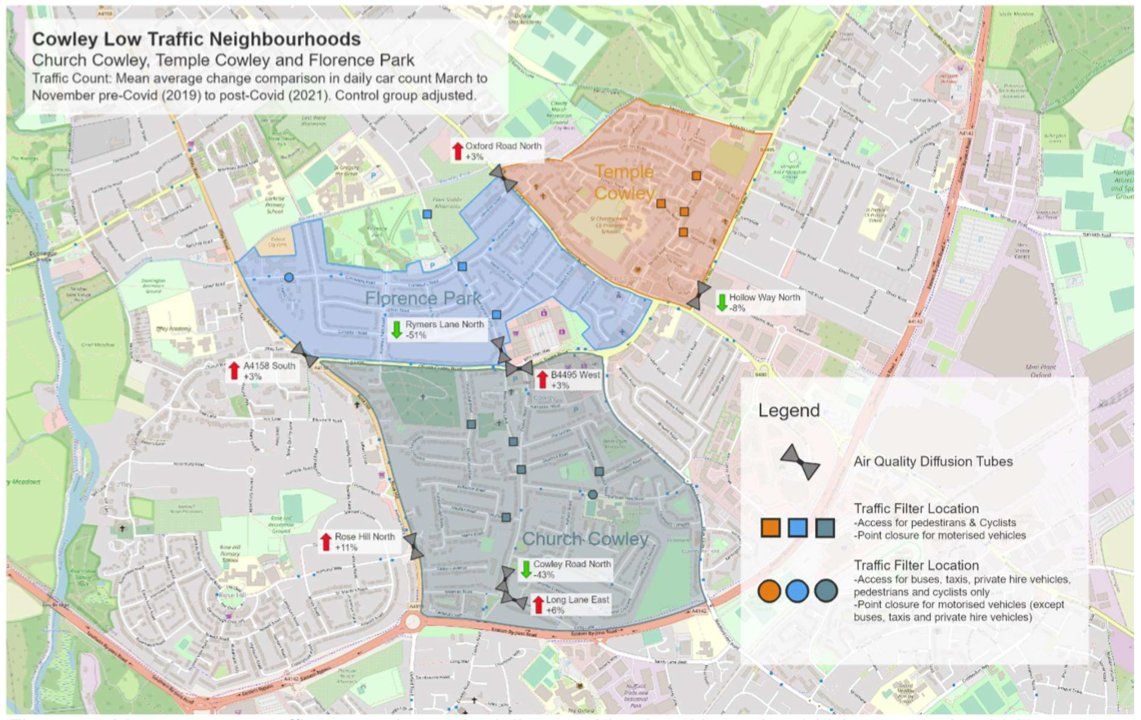
The motion to be considered by Oxford City Council calls for an end to “divisive non-evidence-based transport policies”. But, crucially, it does not itself offer any evidence that “removing Low Traffic Neighbourhoods” will reduce congestion. No one at all likes the Plain right now, yet no evidence has been presented that removing LTNs would fix the issues. Transport modelling may be an inexact science, but there is none, of any sort, attached to the motion, nor even a commitment to carry any out.
Still, there are three conclusions we can safely draw. Bringing traffic back to former LTNs near schools would inevitably mean school run journeys returning to the car as roads became less suitable for children to ride (as one Oxford school governor writes, “the school run is the biggest safeguarding risk of all”). The national increase in congestion would still be reflected in Oxford.
And if the traffic sensors are to believed, though the 3% increase on boundary roads might be cancelled out, residents on streets which had been part of LTNs would see traffic double.
None of those streets are in Cllr Aziz’s or Cllr Rehman’s wards.
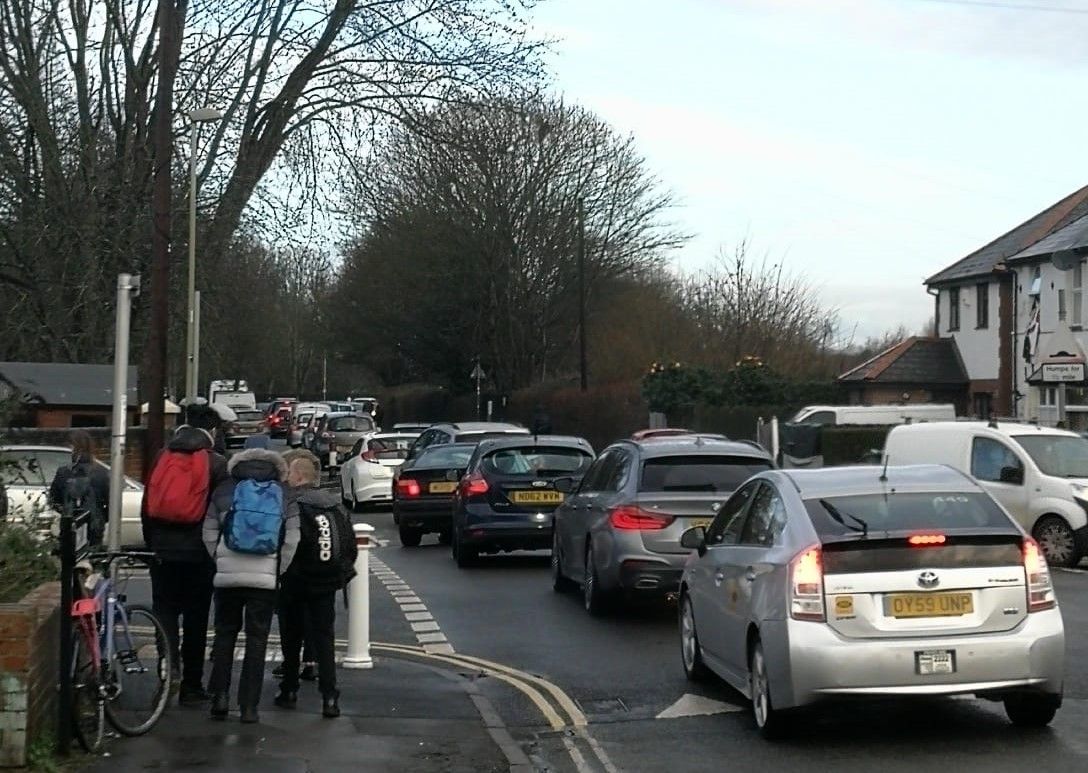
“Cycling is hazardous”
…and cycling remains a hazardous mode of transport.
In the areas now forming the St Mary’s and Florence Park LTNs, there were on average 6.8 collisions a year in the 2015-2019 time period (SATS19 police database of reported collisions/injuries). In 2022, there were three – all the result of vehicles illegally going through modal filters before they had robust bollards.
Insofar as cycling in Oxford remains hazardous, it is on the roads and junctions where traffic has not been restricted. Clarion readers need no reminder of the dismal accident record at The Plain and other junctions around the city – a record that was atrocious before LTNs were introduced, and one that persists at locations both near and far from the East Oxford LTNs.
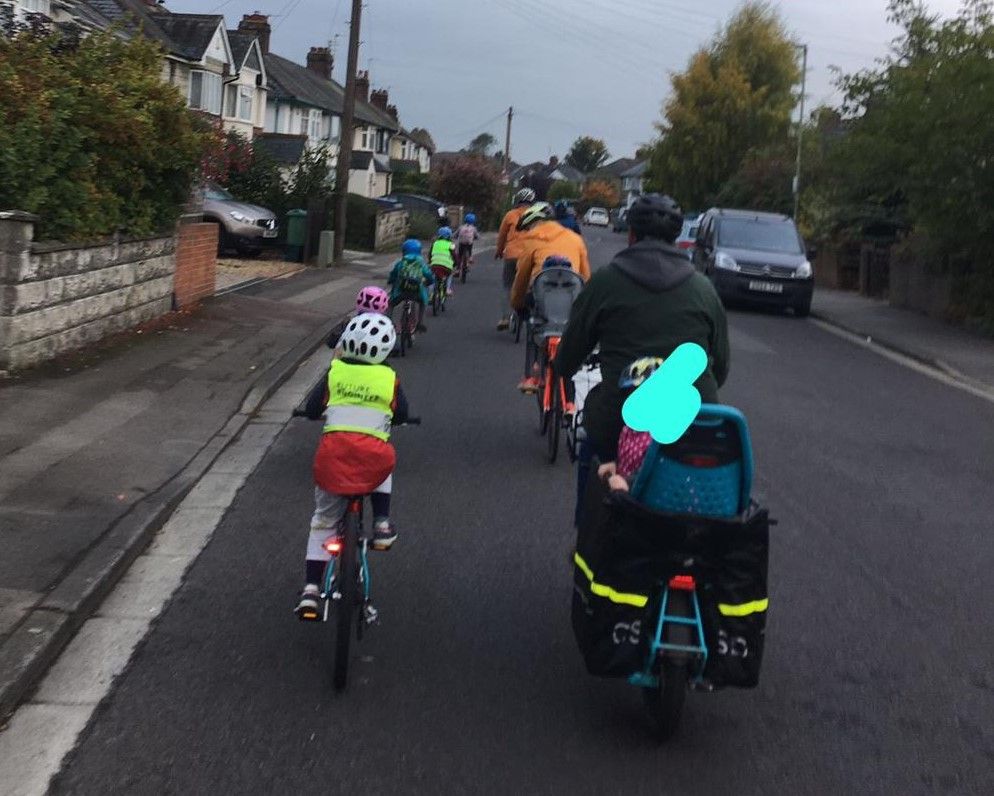
“Pollution has increased”
Pollution has reduced in the streets where LTNs have been introduced, however the opposite has occurred on roads that are now heavily congested.
Oxford City Council is required by Government to monitor air pollution every year. As a result, there are publicly available air quality reports that go back to 2015. The reports are long, but page 12 has the salient points – the monitoring stations on three key boundary roads. These are Morrell Avenue, St. Clements, and Cowley Road/James Street.
Morrell Avenue pollution levels reduced. St Clements increased slightly to 43μg/m3, slightly above the existing UK legal annual mean limit for this pollutant (40μg/m3). This has, historically been the city's highest NO2 hotspot. The Cowley Road/James Street monitor showed an increase but remained well below the legal pollution limit. (Cowley Road is, in the main, retail not residential.)
How have air pollution levels in Oxford changed since 2018? This animation by @johnjdc, based on data from Oxford City Council’s monitoring stations, shows the changes – with a notable decrease in levels in the city centre. https://t.co/Gu6l39en8C
— Oxford Clarion (@OxfordClarion) June 17, 2023
2023’s monitoring data is due to be published in mid-2024. Evidence for ‘modal shift’ – the shift from cars to public transport or active travel – will be closely scrutinised. But one major change is happening already: the new fleet of electric buses. These can be expected to cause a noticeable drop in pollution over time, particularly on busy bus corridors like St Clements.
“The policies are unfair”
Divisive transport policies are pitting people and communities against each other on class, social economic and racial lines in a way similar to the Tory Poll Tax, which was eventually scrapped. The most vulnerable in society have also been ignored with no amendments for the elderly or residents with disabilities.
In Churchill ward, which includes Wood Farm, 38.1% of residents do not own a car. In Barton it is 30.6%. In Wolvercote, it is 22%.
The picture is complex, but looking at the demographics, it is hard to conclude that car reliance falls along “social economic” lines in the way the motion implies. Indeed, there appears to be no clear correlation between car ownership and household income in Oxford, other than the self-evident truth that the very poorest in society do not own a car.
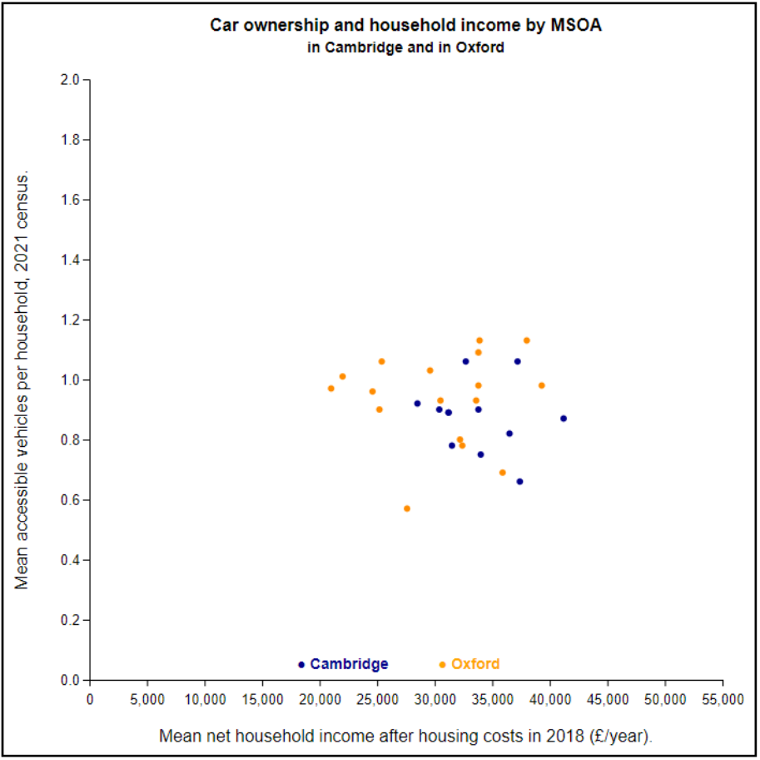
The case for the impact on blue badge holders has firmer foundations, and it is important these voices are heard. Similarly those tradespeople who travel around the city (though we are seeing a steady uptick in cycling window cleaners, plumbers, midwives, estate agents and more).
But it is not believable that all 10,000 vehicles on the Cowley Road each day are blue badge holders and tradespeople. Some of those journeys are “discretionary” – and reducing those is how policies aim to tackle congestion.
Perhaps the most worrying aspect of the motion is the assertion that the policies are drawn along “racial lines”. Cllr Aziz doubled down on this in an interview with the Oxford Mail, saying “These policies have not been created by anyone who looks like or lives the life of your average resident in east Oxford.” We are surely not alone in regretting that Cllr Aziz has chosen to judge a policy on what its supporters “look like”.
“The policies are unpopular”
80% of businesses and 60% of consultation respondents oppose the introduction of East Oxford LTNs.
Consultation responses are not, of course, a representative survey of local opinion. But such a survey is hard to find.
The newly published Government report is that rare thing. Polling organisation Ipsos surveyed residents in four LTNs, in Birmingham, London, Wigan and York. It concludes that “In all areas, a higher proportion of residents were supportive than opposed. Levels of support for local LTN schemes are higher than levels of awareness and perceived personal impacts.” It also notes that many respondents weren’t aware they lived in an LTN; that 54% of respondents “saw the number of vehicles travelling through their area as a very or fairly serious problem”; and that “many residents continue to live with traffic-related problems”.
YouGov, another polling company, was commissioned in 2022 to ask Oxford residents about LTNs as part of its regular ‘Omnibus’ polling. 56% of those surveyed supported LTNs (defined as “residential areas where driving cars and other motor vehicles is restricted other than for access to the neighbourhood”), while 29% were opposed.
(Hang in there. We're halfway there and so are you… Might as well finish it now. How's that tea? Cold yet?)
“Traffic filters are not evidence based”
Scrap plans for divisive traffic filters - which are not evidence based.
Traffic arguments make for strange political bedfellows.
At this point, the motion moves on from the existing Low Traffic Neighbourhoods to the proposed traffic filters. These filters have been planned since 2015, when Oxfordshire County Council was run by a Conservative administration. The opposition to the filters is now led by… the Conservative group on Oxfordshire County Council. This City Council motion is being put forward by the ex-Labour, avowedly socialist Independent Group.
The Oxford Bus Company certainly thinks that there is evidence supporting the introduction of traffic filters:
Over the last 10 years, our buses have been getting slower as traffic levels in our city from private cars and vans has increased. This has meant that our journey times have become longer, making each bus and driver less productive. This increases the costs of running our services, and also makes them less attractive for customers to use – reducing our revenue.
Department for Transport funding for Oxford’s electric buses was secured against this, with civil servants writing:
Ministers have therefore decided that this funding will be paid in financial year 2022–2023 following the final decision from Oxfordshire County Council on the implementation of the traffic filters which secures bus operator support for the ZEBRA proposal.
The evidence, then, was strong enough to convince Oxford’s two bus companies and the Department for Transport, none of them known as patsies of Oxfordshire County Council. It may not convince the councillors of the Independent Group, but to say there is no evidence behind it is hardly plausible.
“Do something else instead”
As democratically elected representatives it is our duty to find answers and develop and support polices that work and are fair. Imposing unpopular and seemingly failing strategies will not achieve behavioural change in encouraging active travel. To reverse years of neglect of Oxford’s transport infrastructure requires real investment from central government. In the meantime, this council agrees to propose to the County Council that they:
– Lobby central government for major investment in infrastructure with safe, clear segregated routes for pedestrians and cyclists and roads for motor vehicles.
Asking for a unicorn loudly, and repeatedly, does not make it any more likely that a unicorn will appear.
Your Clarion editorial team would also like “major investment in infrastructure for safe, clear segregated routes for pedestrians and cyclists”. However, we have read at least one newspaper in recent months and so have a little more awareness of the current Government’s priorities and the current state of public finances.
The Government LTN report was issued under the banner of “Our 30-point Plan for Drivers” and currently nestles on gov.uk next to an announcement promising “flying taxis” and “crime-fighting drones”. We are not convinced that “lobbying central Government for major investment in safe, clear segregated routes” is likely to prove fruitful right now.
(Are you still there, dear reader? Perhaps you need another cuppa. We're nearly done, I promise. Have a picture of a cat. Perhaps it will make you smile?)

Why here? Why now?

At this point, let’s look back to our budget explainer last month:
The County Council looks after roads, education, social care (and much more) while the City Council is housing, licensing, waste disposal. City (and district) councils have smaller budgets and might seem less consequential than counties, but they are charged with incredibly important work on social housing and support for the homeless.
This motion is going before the City Council. Roads and traffic do not fall within its jurisdiction. City council meets (broadly) once a month with a finite amount of time to get through debates. There are five agenda items on the slate for Monday under the heading of “Motions representing the city”, which are allotted 60 minutes in total.
By convention, the order rotates between the parties: the finite time given to member motions means that the later ones won’t be debated, so this convention gives everyone a fair crack at the whip. This month is the Independent Group’s turn to go first – and with that in mind, it’s fair to draw the conclusion that the Independent Group considers Low Traffic Neighbourhoods the most pressing issue facing Oxford.
What have the other parties put forward?
- “Cancel divisive non-evidence-based transport policies including traffic filters and strengthen citizens trust in democracy” (proposed by Cllr Ajaz Rehman, seconded by Cllr Shaista Aziz) [Independent Group]
- “Uniting to Tackle Oxford's Housing Crisis” (proposed by Cllr Linda Smith, seconded by Cllr Nigel Chapman) [Labour]
- “In Support of Green Investment” (proposed by Cllr Chris Smowton, seconded by Cllr Katherine Miles) [Liberal Democrat]
- “Weight and emissions based parking charges” (proposed by Cllr Emily Kerr, seconded by Cllr Lois Muddiman) [Green]
- “The cost of living crisis and local government funding” (proposed by Cllr Ed Turner, seconded by Cllr Nigel Chapman) [Labour]
At recent meetings, there has only been time for the first two motions to be considered. LTNs are a sufficiently contentious issue that there is no guarantee even the second, on Oxford’s housing crisis, will be taken tonight.
Housing, unlike LTNs, is a city responsibility – an issue that Oxford City Council can actually do something about. It’s a subject that deserves to be discussed more widely before voters place their cross on a ballot paper in May. Displacing this in favour of re-litigating a debate already held at County Council several times would be a disservice to the people of Oxford.
We reached out to councillors whose motions are likely not to be heard. On weight-based car parking, Cllr Emily Kerr expressed her frustration to the Clarion:
“I expect that due to the LTN motion, my motion on weight & emissions based parking charges in City owned car parks won’t get heard. This is a real pity because more equitable parking charging is key: bigger cars take up more space and should pay more, if all drivers had small cars more people could park in the same area.”
Cllr Katherine Miles, who is bringing the motion on green investment, said:
“The impact of climate change is clear, as is the inadequacy of our existing infrastructure in Oxford and the wider country. Yet both the Prime Minister and Leader of the Opposition are scaling back investments in green infrastructure when they should be scaling up. Investment in green infrastructure can help mitigate and adapt to climate change and build climate resilience for our economy and people. There is a social justice imperative for this investment, as the poorest of society are most vulnerable to the impacts of climate change – but this investment is good for business too as it supports decarbonisation, builds skills and creates green jobs.”
“I trust I can rely on your vote”
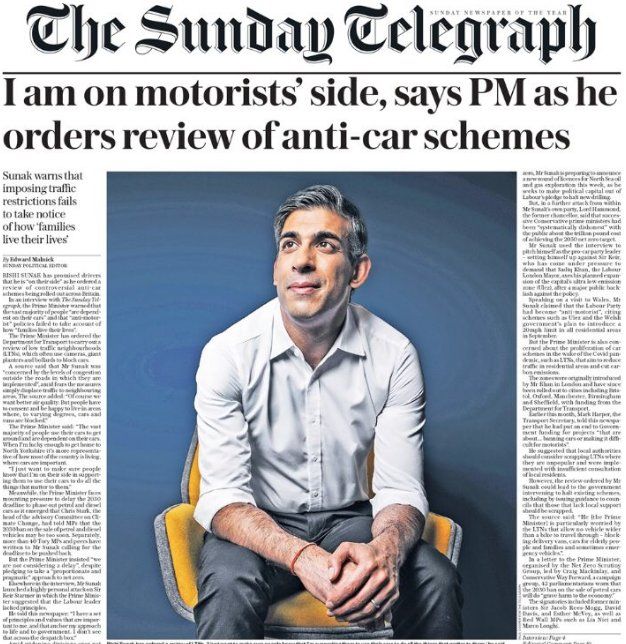
“Say the right things… when electioneering
I trust I can rely on your vote?”
The song ‘Electioneering’ by Radiohead – Oxford’s best known musical export – has not been far from our minds this last week.
Like us, you probably have read at least one newspaper in recent months, and are at least cursorily aware of the upcoming General Election. Current polls show the Conservatives unable to dislodge Labour from a commanding lead, while Reform UK takes votes on the right and the Liberal Democrats nibble at their heels in the Home Counties.
In this context, Rishi Sunak’s “Plan for Drivers” is easy to decode. It firms up the core Conservative vote against the threat from Reform. It is not a policy aimed at voters in Oxford East, central London constituencies, or most other areas which actually have LTNs. Those seats are long lost to the Conservatives. It is a policy designed to win back wavering readers of the Sunday Telegraph, the newspaper granted an exclusive Sunak interview when the review was first announced. The Sunday Telegraph does not sell many copies in East Oxford.
Nor is it a policy likely to change much – certainly within the limited months remaining for this Government. The veiled threat that councils must row back on 20mph schemes or there will be “implications for the awarding of funding in the future” means little when no one expects this Government to be in power “in the future”.
The motion in front of Oxford City Council tonight is even less likely to change anything. City councillors will be asked to vote on a motion that is essentially writing a letter to the County Council – a council that has already had multiple votes on this issue. Why would the County Council disregard its own votes in favour of a vote from another council?
The Oxford City Council elections in May will be particularly febrile. In most wards in East Oxford, voters will have the choice between at least four parties: Labour, the Liberal Democrats, the Greens, and the new Independent Oxford Alliance. Other independents who left the Labour party over Gaza may also choose to stand again. In Rose Hill & Iffley, currently Cllr Aziz’s ward, the avowedly anti-LTN Independent Oxford Alliance are standing their most experienced candidate, David Henwood.
In Oxford as in Westminster, the art of winning an election is identifying a demographic that might vote for you, and persuading them that you, alone, are on their side. Votes in a council chamber, turned into leaflet attack lines, are a time-honoured way to achieve this. Whether the motion succeeds is almost immaterial.
But let’s suppose for a second it meant something. Councillors have a stark choice here. They can vote for pressing on with change that has achieved some modal shift, and could do more if constraints like the Plain were addressed – which in turn, advocates argue, is the aim of the traffic filters.
They can continue to demand a unicorn. The Government of the “Plan for Drivers” appears unlikely to fund (in the words of the motion) “safe clear segregated routes for pedestrians and cyclists”, leaving “roads for motor vehicles”. Nor is there any indication that Rachel Reeves, chancellor of an incoming Labour Government, will turn the spending taps back on.
And there is a third way, which is to accept some parts of the motion, perhaps the call to lobby central government for more funding for safer infrastructure. This is achieved via another party putting forward an amendment – and again those leaflet headlines come into play.
Change the record
Few issues in Oxford have provoked as many column inches as the Low Traffic Neighbourhoods. That will continue tonight as an LTN debate crowds out discussion on Oxford’s housing crisis, the cost of living, green investment and others.
The Oxford Clarion, of course, has its own viewpoint on Oxford traffic. We are firmly in the Clarion tradition of a progressive publication that values walking and cycling. But even we are frustrated that matters so crucial to Oxford will go unheard. When highway works are already underway for the traffic filters to launch in the autumn, debating writing letters to Oxfordshire County Council on LTNs is an indulgence and likely to achieve nothing.
Should the rural districts be required to take more houses? Has the Green Belt had its day? Should the city continue to prioritise mixed use commercial/residential, or is it time to move to residential above all else? That is the debate we would like to hear this evening. Instead, we will hear a repeat performance of the same debate played out at Oxfordshire County Council so many times already. Oxford deserves better than this.
